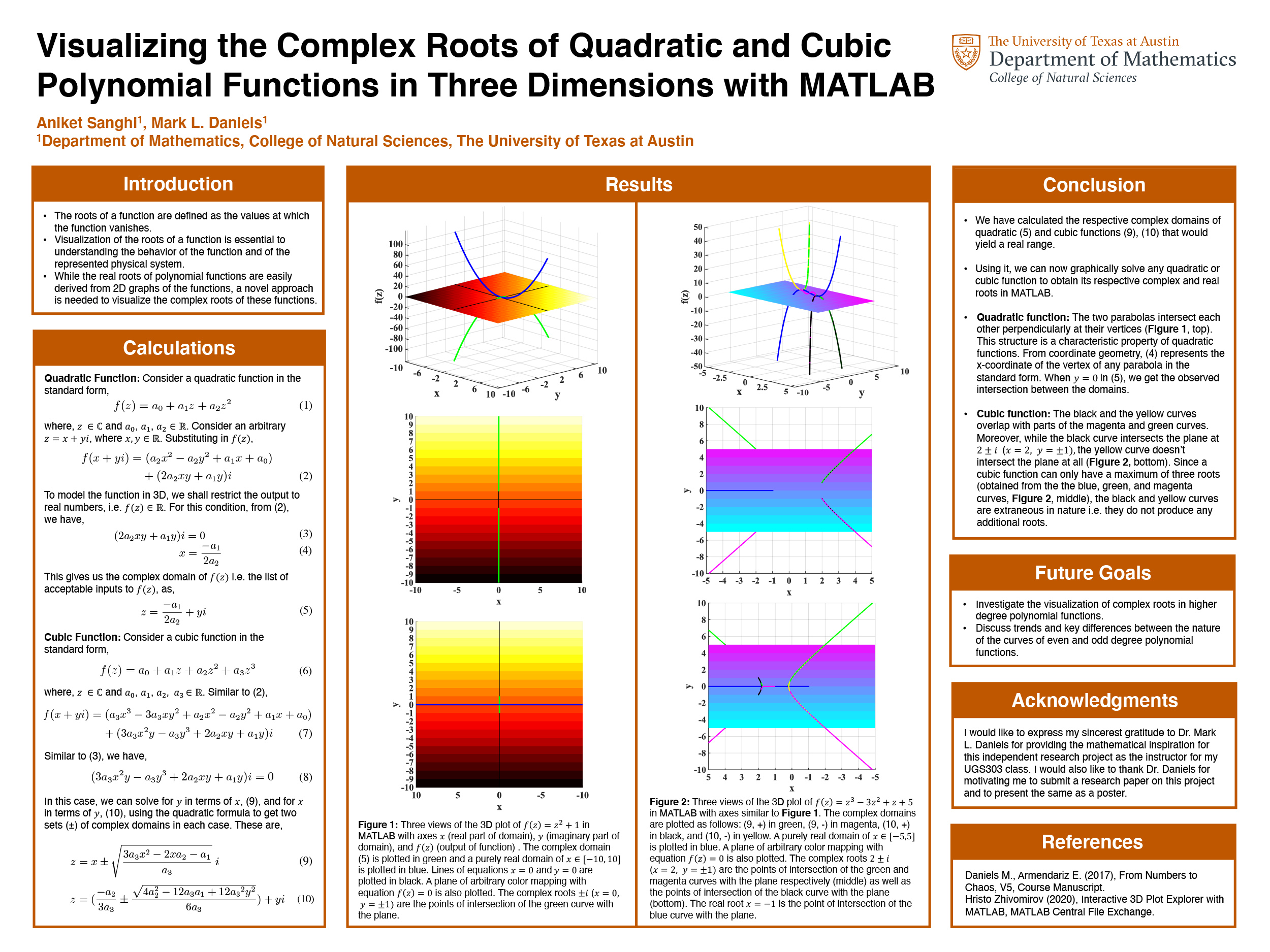Aniket Sanghi, Mark L. Daniels
The problem of finding the roots of polynomial functions is central to the study of the behavior of polynomial functions in mathematics. We know that given any function in the coordinate plane, the points of intersection of the graph of the function with the x-axis represent the real roots of the function. However, roots that are in the form of complex conjugate pairs cannot be found by this approach. An interesting question thus arises as to how the complex roots of a function could be visualized graphically. We graphically solve for and visualize the complex roots of quadratic and cubic polynomial functions in three dimensions using MATLAB. Given a polynomial function, a complex domain may yield a complex or a real range. Ideally, in the situation that the range is complex in nature, we would need four dimensions to represent the graph of the polynomial function, i.e. two dimensions to represent the domain and two dimensions to represent the range. We examine the graphs of a quadratic and a cubic polynomial function in three dimensions by restricting the range to real numbers. We have, thus, calculated the respective restricted complex domains of quadratic and cubic functions that would yield a real range and have graphed the same in MATLAB. We notice that the curves generated produce intersection points with the solution plane thereby providing the visual locations for the complex roots of the quadratic and cubic functions. We also note an increase in the complexity of curves on moving from a second to a third-degree function. Using this approach, we can thus graphically visualize and obtain the complex roots of any quadratic and cubic function in MATLAB.

Comments
What do you expect to find if you were to visualize the complex roots of higher degree polynomial functions? – Rob Reichle
Hi! For a fourth degree polynomial, we expect to find more parabolic branches that maintain the structure of being perpendicular to each other. Another interesting phenomenon we look to model is how we can represent the obtained domain in the complex plane and whether there is a mathematical relation that explains why we obtain these specific domains. – Aniket Sanghi

